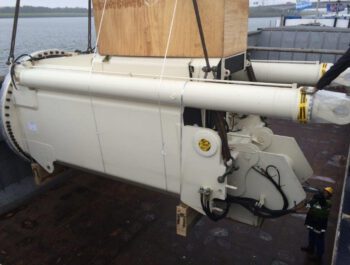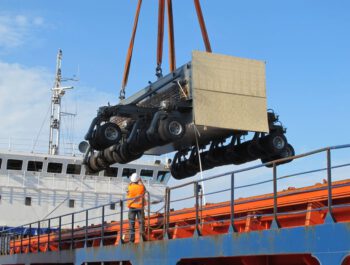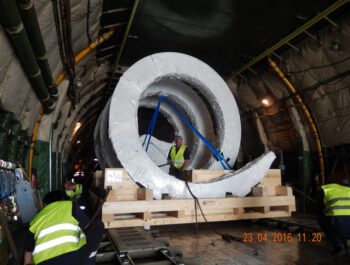MULTIMODAL TRANSPORT
IN A NUTSHELL
- Execution of worldwide, multimodal project shipments
- Control and supervision of multimodal transactions
- Transport and crane solutions for machine and plant construction
- Partnerships with project forwarding companies all over the world
- Advice on export packing and the acquisition of same
“MULTIMODAL TRANSPORT” DEFINED
In multi-modal transport, at least two methods of transport are employed for the transportation of particular goods or a transport unit. In other words, it is when a goods or transport method is transported from A to B by means of various transport carriers within a specified time frame.
A special form of multimodal transport is intermodal transport. Here, goods are bracketed together with transport units (containers, swap containers, bulk containers etc.) and transported in this form via a variety of transport carriers. In this process, the individual goods never change, but only the transport unit as a whole switches between transport methods such as truck, rail and ship.
Intermodal and multimodal transport requires a high level of professional expertise
The challenges are wide-ranging. A competent partner for this field needs to have a huge amount of professional knowledge at their disposal. This is because the execution of multimodal and intermodal projects necessitates detailed planning. Which transport carriers best compliment each other? How can this be done in a way that saves resources? Which is of these options is still economically profitable? Put simply: how do the goods get to their final destination cost-effectively, in a resource-saving way, punctually and in impeccable condition?
Multimodal Transport – Example of a Classic Transport Chain
A large, heavy machine needs to be transported from its manufacturer in Germany to the USA. The sender packs the machine in a seaworthy wooden crate for carriage overseas according to export packing regulations. The weight of the machine along with the crate is so large that non-stop transport by road to the port is not permissible due to regulatory restrictions. Consequently the cargo is picked up by a truck at the factory and, taking into account the load-bearing capacity of the roads and bridges, is transported to the nearest inland port. Here mobile cranes lift it into a barge, which will then take the cargo to the nearest suitable overseas port via the available waterways. On arrival, the machine and the crate will be lifted from the barge, usually with the port’s own crane systems, and transshipped – either directly or indirectly over the quay – to an ocean-going vessel.
This will then ship it overseas to the USA, again to a suitable port for these types of goods. Here the machine is unloaded from the ship, taken from the crate, and transferred to a truck. This, of course, is done while taking American transport restrictions into account and it is finally transported it to its recipient. This is a classic example of a multimodal project transport.
An example of an intermodal transport in this case would be the transport of the machine’s fittings. The sender has these loaded directly into a container, which is then picked up by truck or rail and brought to a seaport in an unchanged condition. There it is loaded onto a container ship and shipped to the USA, where it is again taken by a truck and transported to the recipient. In this case the goods never leave the container and are transported non-stop as a unit.
Pfaff International –
We Provide a Full Service
Pfaff is happy to plan, organise and advise you in all areas of project business. As regards export packing we can lend our advice and assist in acquiring it for you. We also monitor the entire transport chain from loading to the secure arrival of the cargo at its destination. Take advantage of our decades of experience and enjoy worry-free transport from A to B. As it happens, we also provide a customs service. You might in addition be interested to meet the Pfaff International team.



